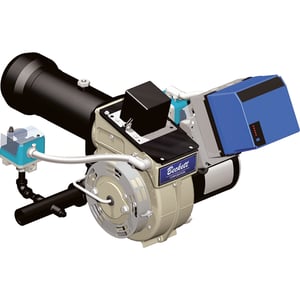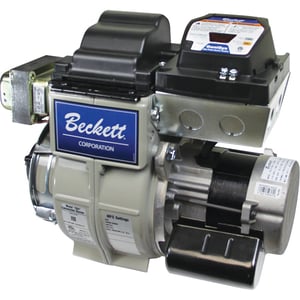In order to heat a space of any given size, a natural gas heating system needs the right components for the job. While all system parts are certainly important, the burner is an especially crucial piece of the puzzle. A natural gas burner provides the energy for the entire heating system by burning the fuel, which in turn heats the vessel while byproducts are drawn out by a fan or chimney. However, the type of heating system determines the type of burner that's necessary for optimal performance.
In this post, we'll provide an introduction to natural gas burners, including the three main types of burners, how they function, and why choosing the right burner during installation is so important.
3 Main Types of Natural Gas Burners
- Inshot burner: The inshot burner is one of the most common burner types today. Operation of an inshot burner is simple. Pressurized fuel enters through a valve and rushes through an orifice, which meters the quantity of fuel. Metered amounts of gas flow into a burner tube, where air and gas are mixed inside, then exit through venturi openings in the tube. These openings at the tip of the burner are where the flame will occur when lit by a pilot light. Byproducts of combustion move by convection through the appliance. The heated gases heat the surfaces and exit the appliance. If the design of the appliance is restrictive, inshot burners commonly require the assistance of a draft inducer, which is a fan that draws gases out of the system and pushes them out through the chimney.
- Premix burner: In a premix burner, the gas and air are mixed in a chamber prior to discharge from the burner tip. The mixture is then pushed into the burner through a radiant shell, and the gas is ignited around the shell, which holds the flame. Many premix burners also use a draft inducer to draw out byproducts and push them out through the chimney. As opposed to an inshot burner, a premix burner has an igniter instead of a pilot light. Additionally, premix burners are limited to relatively low-burning velocity flames.
- Power gas burner: A power burner is the most similar gas burner to an oil burner in that a mechanical fan to mix air and gas which is injected into the combustion chamber. Combusted air is delivered around an orifice where the gas exits, then ignited to create one distinct flame. A power burner does not require a draft inducer, as there is enough pressure in the system to distribute the energy. Power burners can provide an optimal ratio of gas to air, and therefore tend to be more efficient and perform better by regulating excess air.
 |
 |
| Click here to learn more about the CG4 Residential Gas Burner and other burners from Beckett. | Click here to learn more about the CG10 Commercial Gas Burner and other burners from Beckett. |
The Importance of Using the Right Burner
While inshot, premix, and power burners comprise the main types of burners you'll generally encounter today, there are various designs and assemblies of gas burners available. Selection will vary by manufacturer and application. However, when installing a gas heating system, it's incredibly important to choose the best type and design based on your specific application.
Remember, a heating system is intended to work only as a complete system, meaning that it can certainly fail if just one component isn't working with the rest of the parts. There are different designs and levels of efficiency offered by the various gas burner types. Therefore, identifying the correct type of burner for the system and choosing one that's reliable and performs to a high standard is necessary in order to ensure the system is utilizing the gas efficiently and operates reliably and trouble-free.


